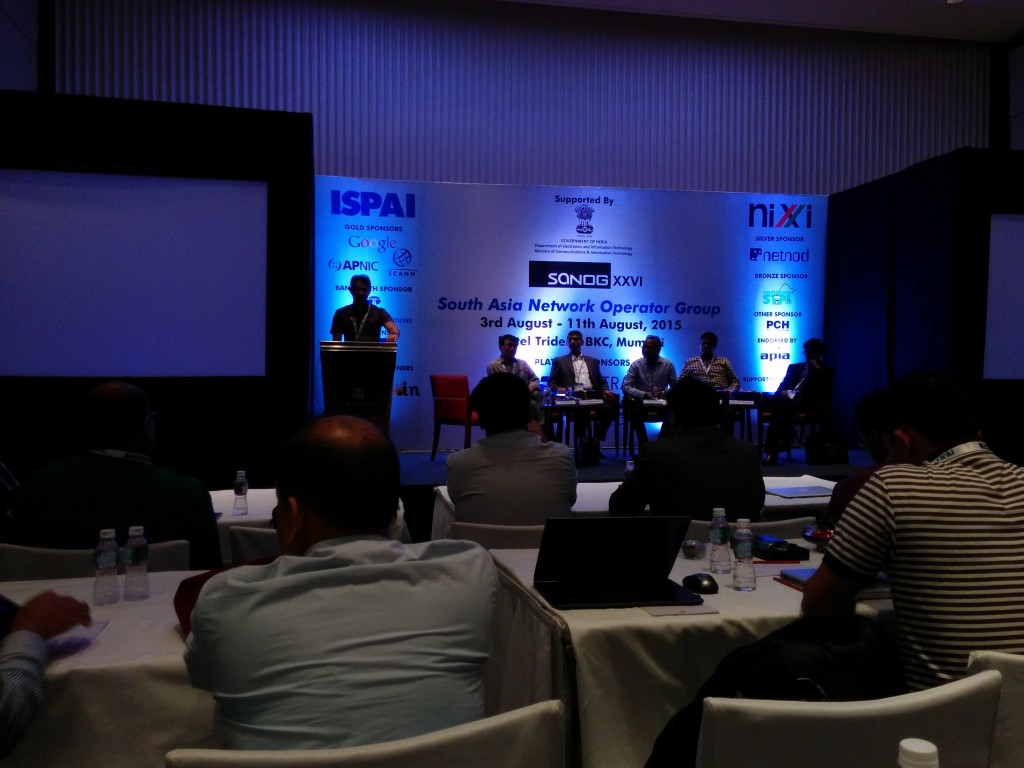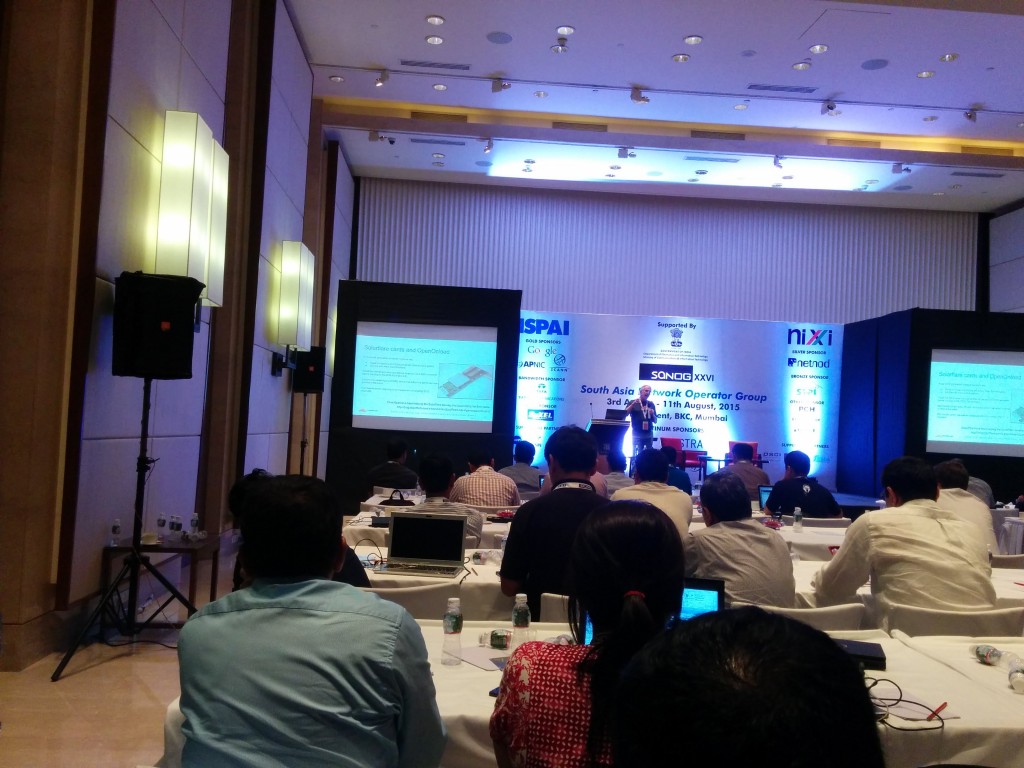Notes from SANOG 26 - Mumbai


Just finished with SANOG 26 conference and tutorials. It went very nice. Interestingly this time conference did not start early morning like it did in SANOG 24 at Noida. It was rather late in afternoon. Also, on very good note - there were less Govt. bureaucrats to bore attendees with usual stuff they always talk about but have very little idea. One specific interesting presentation was Opportunities and Challenges for Broadband Wireless in India by Prof Abhay Karandikar (from IIT Mumbai). In start I felt it to be usual crappy 5G talk but later realized it was much more interesting. I loved the idea “Have 2Mbps everywhere static broadband and not some absurd number on mobile wireless broadband as we hear in case of 3G/4G. Although 2Mbps now is much slower and I would rather suggest that we target for 10Mbps everywhere (something which can be supported by copper/coax/fiber hybrid) but anyways it was nice refreshing talk. His thoughts were interesting but mostly impractical since had high dependence on useless project like NOFN. For the next part, we had a nice theme of keeping network simple which everyone kind of liked. Simplicity in Network Design & Deployments by Dany Pinto (from Colt) and Unified Forwarding with Segment Routing by Mohan Nanduri (from Microsoft Azure Cloud WAN team) were part of that. Santanu Dasgupta gave a presentation about Challenges of L2NID based Metro-E Architecture for vCPE/NFV Deployments and kind of confused everyone. :P